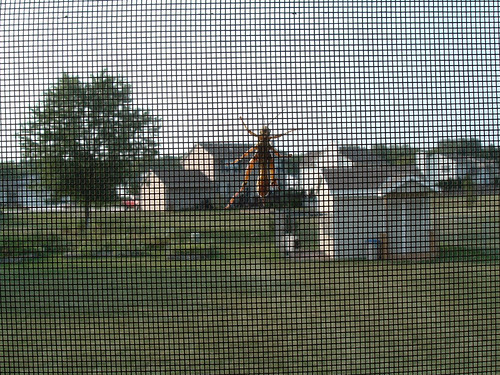Windows are the gatekeeper, the first stop for anything that wants to get inside your house, including pests and outdoor pollutants. As temperatures begin to drop and humans begin to cozy into their homes, so do pests of all kinds.
The first line of defense against pest infestation involves making sure your windows have not become the “crossing point” for any bug, spider or rodent who wants in. Taking a few steps to make those windows a little less hospitable can help ensure your home is pest-free.
Check Screens

Image by bcmom via Flickr.
According to the Screen Manufacturers Association, a cooperative fifty-state effort is underway to publicize the importance of well-fitted screens as a preventative measure in keeping pests out of the house. According to the program, being publicized through the Centers for Disease Control, an ounce of prevention goes a long way. Securing windows with well-fitted screens allows ventilation to be filtered throughout the home, while stopping a majority of insects and rodents from making their way in.
Any opening in your home — including windows, sliding doors, pet doors and front and back doors — should be fitted with a screen. In fact, garage doors that are kept open on a regular basis can also be screened, protecting that area of the house from pests. Remember to cover ventilation openings around your house as well. A twenty-mesh screen should be adequate for preventing all but the smallest insects from entering.
If you’re not wild about the look of screens or somehow feel as though they take away from the aesthetic quality of a room, add a soft pair of drapes or cellular shades to dress them up.
Seal Cracks
Once your screens are properly installed, the University of Arizona recommends taking steps to seal any tiny openings that may remain. Weatherstripping around windows and door sweeps will act as another barrier to pests. When it comes to sliding glass doors, seal them by lining the bottom track with foam weather stripping. The rule of thumb is that no light should be able to penetrate any area you have sealed.
Exterior Holes
According to the Southwest Florida Water Management Center, Florida neighborhoods can be infested with moles, rats, opossums, squirrels, snakes and armadillos. Make sure there are no holes around the exterior of your home that will allow these creatures entry. If you do find a hole on the ground, fill it with gravel and dirt. Small holes in concrete can be protected by using the concrete patch available at any home improvement store. If holes are in the siding of your home, clear caulk may be the answer. Any time you’re not sure of your ability to block an opening, call a professional who has been trained to do so. Blocking the entrance of pests is ultimately easier than trying to get rid of them.



